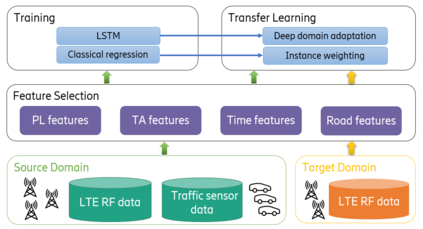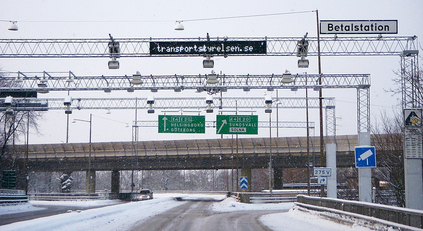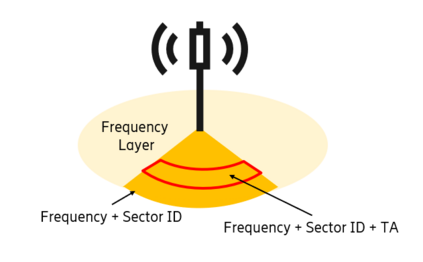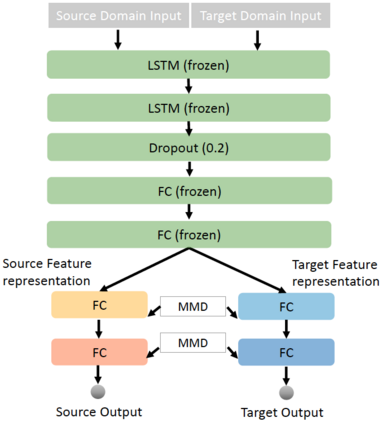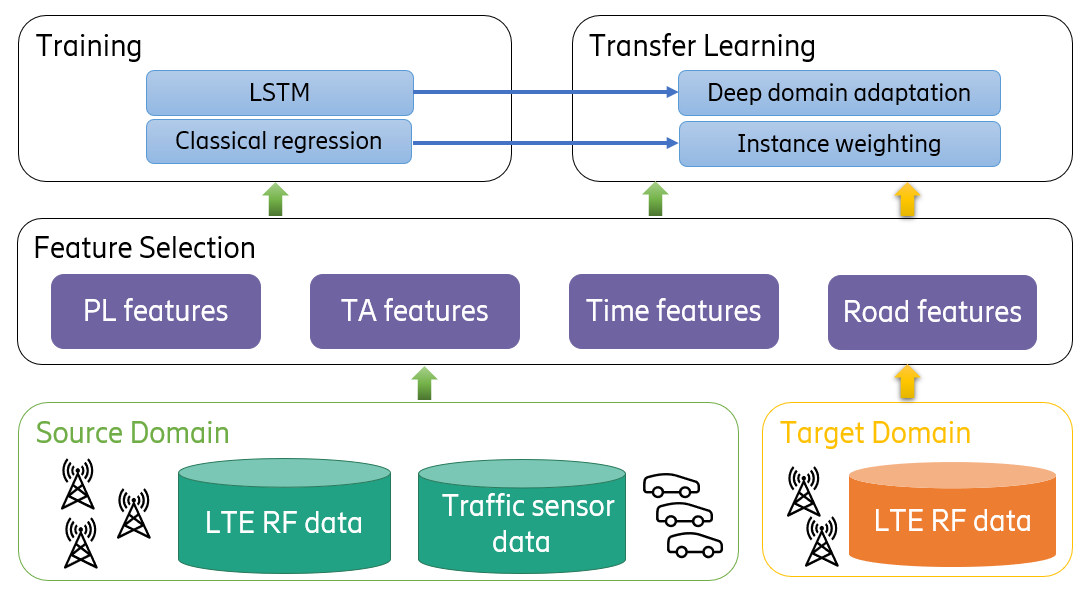As the demand for vehicles continues to outpace construction of new roads, it becomes imperative we implement strategies that improve utilization of existing transport infrastructure. Traffic sensors form a crucial part of many such strategies, giving us valuable insights into road utilization. However, due to cost and lead time associated with installation and maintenance of traffic sensors, municipalities and traffic authorities look toward cheaper and more scalable alternatives. Due to their ubiquitous nature and wide global deployment, cellular networks offer one such alternative. In this paper we present a novel method for traffic flow estimation using standardized LTE/4G radio frequency performance measurement counters. The problem is cast as a supervised regression task using both classical and deep learning methods. We further apply transfer learning to compensate that many locations lack traffic sensor data that could be used for training. We show that our approach benefits from applying transfer learning to generalize the solution not only in time but also in space (i.e., various parts of the city). The results are very promising and, unlike competing solutions, our approach utilizes aggregate LTE radio frequency counter data that is inherently privacy-preserving, readily available, and scales globally without any additional network impact.
翻译:由于对车辆的需求继续超过新道路的建造速度,我们必须执行改善现有运输基础设施利用的战略。交通传感器是许多此类战略的关键部分,使我们对道路利用情况有了宝贵的洞察力。然而,由于安装和维护交通传感器的成本和周转时间,市政当局和交通当局都希望采用更便宜和可扩缩的替代办法。由于其无处不在的性质以及广泛的全球部署,蜂窝网络提供了这种替代办法。在本文件中,我们提出了一个利用标准的LTE/4G无线电频率性能测量计数来估计交通流量的新办法。问题被作为使用传统和深层学习方法进行监管的倒退任务。我们进一步应用转让学习来补偿许多地点缺乏可用于培训的交通传感器数据的情况。我们表明,我们采用转让学习不仅在时间而且在空间(即城市的各个地方)普及解决方案的做法是有益的。结果非常有希望,而且与相互竞争的解决办法不同,我们的方法利用了总LTE无线电频率反数据,这些数据在保护隐私、随时可用和规模上,没有额外的网络影响。

